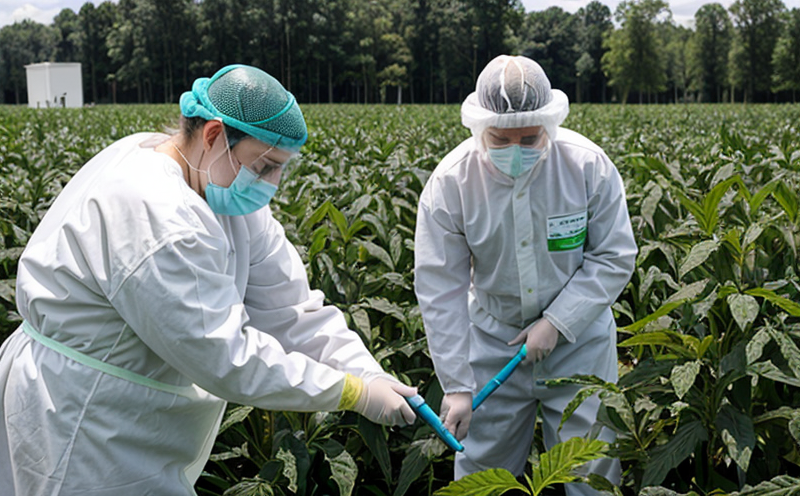FAO Guidelines Microbiological Quality Testing of Biocontrol Products
The Food and Agriculture Organization (FAO) guidelines on microbiological quality testing are designed to ensure the safety, efficacy, and consistency of biocontrol products. These guidelines are essential for regulatory compliance and consumer confidence in agricultural inputs that promote sustainable practices.
Microbial-based biocontrol agents play a crucial role in agriculture by suppressing plant pathogens and enhancing soil health. The FAO has developed comprehensive standards to ensure these products meet stringent quality control measures, thereby protecting both the environment and human health.
The testing process involves several critical steps that are outlined in the guidelines:
- Sample collection: Ensuring representative sampling from production batches.
- Safety evaluation: Assessing potential risks associated with the use of biocontrol agents.
- Efficacy verification: Demonstrating the effectiveness of the product against targeted pathogens.
- Microbiological profiling: Identifying and quantifying the microbial species present in the product.
The FAO guidelines emphasize the importance of standardization to maintain consistency across different manufacturers. This is particularly important for biocontrol products, as their effectiveness can vary based on environmental conditions and application methods.
Compliance with these guidelines ensures that biocontrol agents meet international standards, which is critical for export markets. Many countries have adopted the FAO's recommendations to ensure that agricultural inputs are safe and effective.
The testing process typically involves multiple stages:
- Initial screening: Conducted on raw materials before processing into biocontrol products.
- Bioassay: Evaluating the biological activity of the product under controlled conditions.
- Microbiological analysis: Using advanced techniques such as PCR and HPLC to identify and quantify microorganisms.
The results of these tests are crucial for ensuring that biocontrol products meet the required standards. The FAO guidelines provide a framework for conducting these tests in a standardized manner, which ensures consistency and reliability.
Scope and Methodology
| Test Parameter | Description |
|---|---|
| Safety Assessment | Evaluation of potential risks to human and animal health. |
| Microbial Identification | Determination of the presence and identity of microorganisms in the product. |
| Bioassay Testing | Evaluation of biological activity under controlled conditions. |
| Environmental Impact Assessment | Evaluation of effects on non-target organisms and ecosystems. |
| Sampling Procedure | Description |
|---|---|
| Bulk Sampling | Collection of samples from large production batches. |
| Point-of-use Sampling | Sampling at the point where the product is applied in agriculture. |
| Field Testing | Conducting tests in real-world agricultural settings to evaluate performance. |
Benefits
- Ensures compliance with international standards and regulations.
- Provides a standardized approach for quality control in biocontrol products.
- Reduces the risk of adverse effects on human health and the environment.
- Enhances consumer confidence by ensuring product safety and efficacy.
- Aids in the development and optimization of new biocontrol agents.
- Facilitates market access to international trade markets.
- Promotes sustainable agricultural practices that support biodiversity.
International Acceptance and Recognition
The FAO guidelines have been widely adopted by regulatory authorities worldwide. Many countries, including the United States, European Union member states, and developing nations, use these guidelines to ensure the safety and efficacy of biocontrol products.
Regulatory bodies such as the U.S. Environmental Protection Agency (EPA) and the European Commission have incorporated FAO standards into their own regulations. This ensures that biocontrol agents are evaluated using consistent methods across different jurisdictions.
The use of FAO guidelines also promotes transparency and trust in the agricultural industry. By adhering to these standards, manufacturers can demonstrate their commitment to quality and safety, which is essential for maintaining a competitive edge in the global market.





